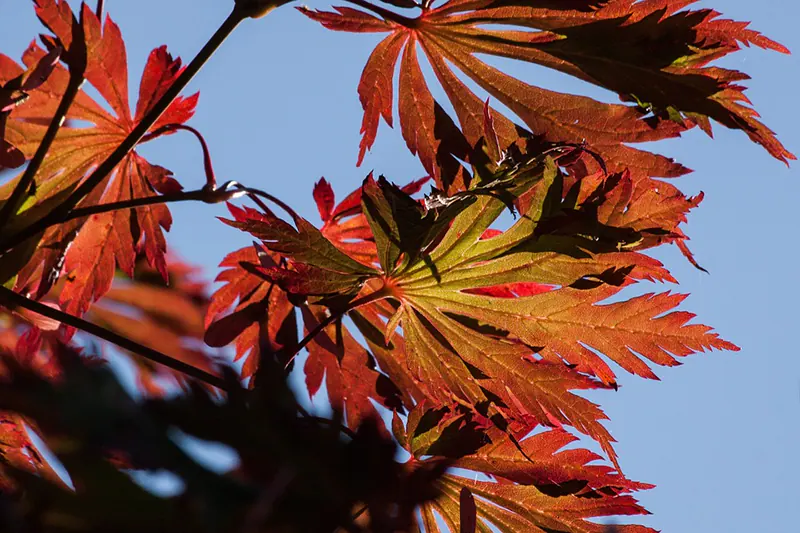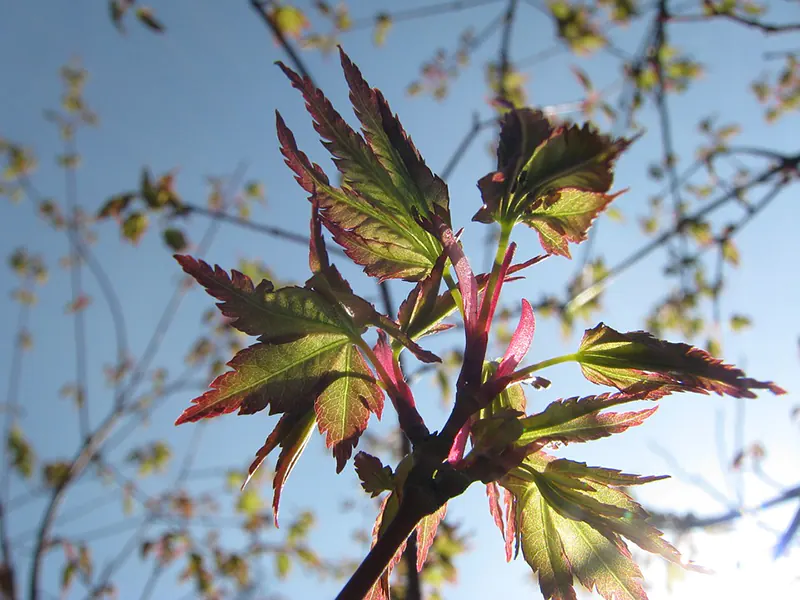How To Revive A Dying Japanese Maple
Japanese maples, also known as ‘Acer Palmatum,’ grow well when planted in rich porous soil and away from direct sunlight on hot days. You will often notice that your tree is dying, perhaps leaves are losing color and texture, or your tree is no longer bright and colorful at all.
Many issues can cause this saddening death of your tree. Read on to find out what can be killing your Japanese Maple and how to save it before it is too late.

What Causes The Japanese Maple To Die?
Sometimes the soil we use for our trees does not release water, keeping the soil damp and causing root rot. Some pathogens feast on wet soil, and we feed them when we overwater. With my first Japanese maple, I have noticed that windy conditions and the hot sun can burn the leaves, leaving them brown and crunchy. The key ingredient is ensuring that your tree is not overwatered and not underwatered.
Pathogens
Specific pathogens like Phytophthora cause root rot. The soil can be damp because of overwatering, the pot’s slow and poor drainage system, or because the soil retains water. The most common root rot symptoms include leaves of your tree turning yellow, brown, or grey and curling inward. Sometimes some branches may shred leaves and weaken. There are other conditions that may show similar symptoms, which is why we suggest that you check the root base of your tree and observe the soil to be certain that it is indeed root rot.
Unpleasant Conditions
Water is essential for Japanese maples to thrive and grow. However, certain conditions can prevent the tree from having enough water. Besides just underwatering, too much sun and windy conditions can result in dehydrated leaves and leave the tree dying. Japanese maple requires shaded places to grow to protect them from sunburn and allow some light to penetrate through. It is easy to notice when the leaves are dehydrated. You will see that they are becoming scorched, and the edges are of a brownish color.
Excess Fertilizers
There is no need to add more fertilizers if your Japanese maple is planted in rich soil mixed with compost. Especially for the outside trees, water can wash off fertilizers from the lawn to your trees during rainy seasons, increasing the concentration of fertilizers in your trees. Another problem associated with too much fertilizer is frost damage.
When fertilizers are applied too early or too late in the season during the cold weather, the new growth can be a victim of frost damage. Some symptoms of fertilizer problems include leaves turning brown or yellow, and because the tree is growing faster than usual, the stem is not matured enough and therefore becomes soft and can droop. 
Solutions For Japanese Maple Problems
Whether the problem is excessive fertilizing, overwatering, or not enough water, you can prevent it from causing further damage. The most outstanding solution is the good old, “prevention is better than cure.” The key to preventing pathogens from getting to your tree is ensuring that the soil you use drains the ground rather than keeping it longer than necessary. You can use soil compost and leaf mold to ensure that the soil drains well. Another solution is ensuring that the pot you use has an excellent draining system.
We also suggest that you increase the oxygen level for your plant by adding grit or using horticultural sand to the planting area. This solution will ensure that your soil has pores and the roots breathe properly, improving the soil ecology and draining system. The best solution if your tree is already affected is to dig it up and get rid of it in an attempt to save the other new plants.
If your Japanese maple is receiving too much sunlight, we recommend moving it to a place with shade before it burns out. The best balance is giving it enough morning sunlight and shade in the afternoon.
During a hot season where the plant can lose water quickly, you should water your tree generously at least once a week and contain moisture by mulching around the compost or leaf mold. During temperate, rainy seasons, there is no need to water your tree excessively if it is planted in an area with good soil that is rich in organic particles.
In cases where you cannot provide a windbreak for your maple, you might have to move it to a place that can provide healthier soil and healthy growing conditions. Suppose you continue watering your tree carefully and as much as needed while ensuring that your soil is porous, along with using mulch and protecting your tree from the sun. The wind should start to show recovery in around a week. Don’t rush it to recover, as it may take longer depending on the damage that has been caused.
If too much fertilizer is the problem, the best solution is to wait for your tree to recover and be patient with it. You will notice that the new growth is turning black. You must cut the black parts off immediately before they can cause further damage. Cut off all the damaged leaves to avoid aphid infestation. We recommend using Miracle-gro fertilizer. It is granules and, in the right concentration, will give your plants enough nutrients to prevent fertilizer problems. Otherwise, be patient and avoid fertilizers while your tree is in recovery. You will start seeing it becoming better and growing normally again in about a year.

How To Revive A Dying Japanese Maple
We all try our best to care for our plants, and sometimes through no fault of our own, we may care too much without realizing that we are suffocating the tree. You can save your dying tree in five easy steps.
Step One: Leaf Observation
Observe the nature of your leaves daily. If you notice that your leaves are turning brown and becoming scorched, you may start to raise some concerns. The most obvious problem is that the tree is getting sunburned, and the first thing you will need to do is move the trees away from the sun.
Step Two: Remove Insects
Your leave may seem perfectly fine or may have some holes indicating that some insects may be feasting on them. Look underneath your leaves, looking for insects like aphids that feed on trees like Japanese maples. If there are any, use solutions that deter insects. The best one we recommend is water and dishwashing liquid solution. Just casually spray your tree using the spray bottle, and repeat after heavy rainfall.
Step Three: Soil Draining System
Monitor the drainage system of your soil and pot. When it is time to repot your plant, observe the roots and ensure they are still healthy. The best solution to fix your soil is to mix one part sand and one part peat to the topsoil until the soil can drain water normally. You can also use a garden spade to plow your ground to keep it breathing and ensure air passes through.
Step Four: Granulated Fertilizer
When you have ensured that your leaves and soil are healthy, you can now gradually add fertilizers that are granules around the base of the tree. Keep watering it in for a couple of weeks. Be sure not to overwater (water at least once a week). The best time to do this process is during summer. If you add the fertilizers in the fall, you will encourage the tree to grow in winter, which will change the cause of the tree.
Step Five: Prune And Cut
Now, your tree is ready to grow fresh and anew. You can influence better health by cutting off any excess branches, which will increase the aeration for your tree and prevent fungus from developing. Make sure that you cut off half an inch from the bark so that the bark’s health remains intact while the tree is healing. Don’t forget to add a pruning sealer. Give your tree time to take in all this and watch it heal.

Conclusion
Acer palmatum needs tender, love, and care. There are many reasons your tree may be dying, including overwatering or not watering enough. In some cases, the soil may not be draining water, the sun causing sunburns, or the wind causing the tree to be dehydrated. There are instances where you may have added excessive fertilizers, which may cause problems for your tree.
You can save your tree from dying by preventing these problems before they happen. In cases where it is too late for prevention, you can cut away the damaged parts before they affect the whole tree. You can also move your tree for better conditions. The best fertilizer is the Miracle-gro fertilizer. Even will all these solutions, the important part is giving it time to heal without rushing it.







